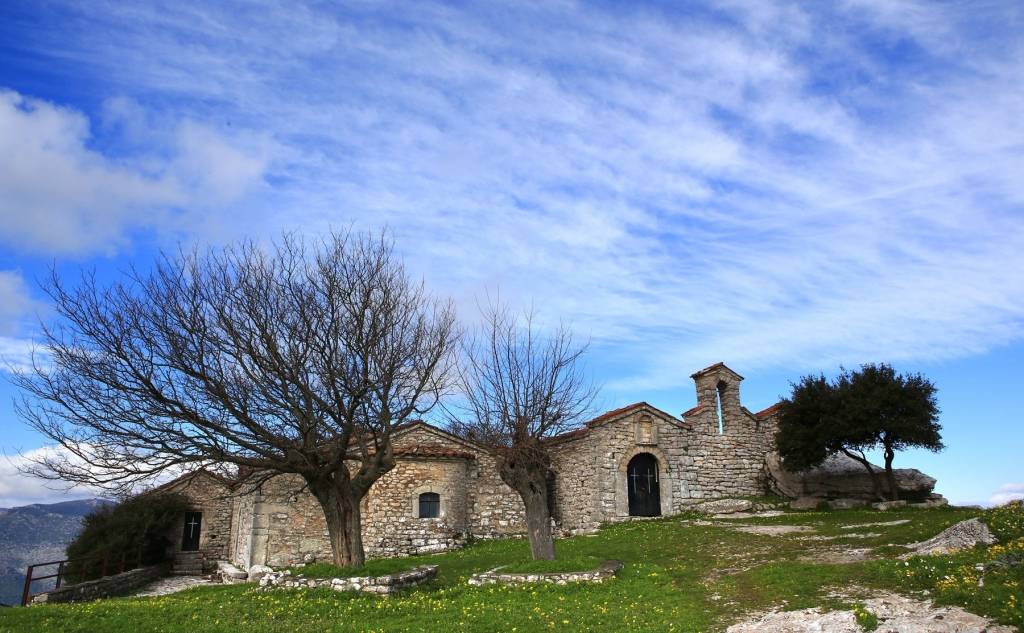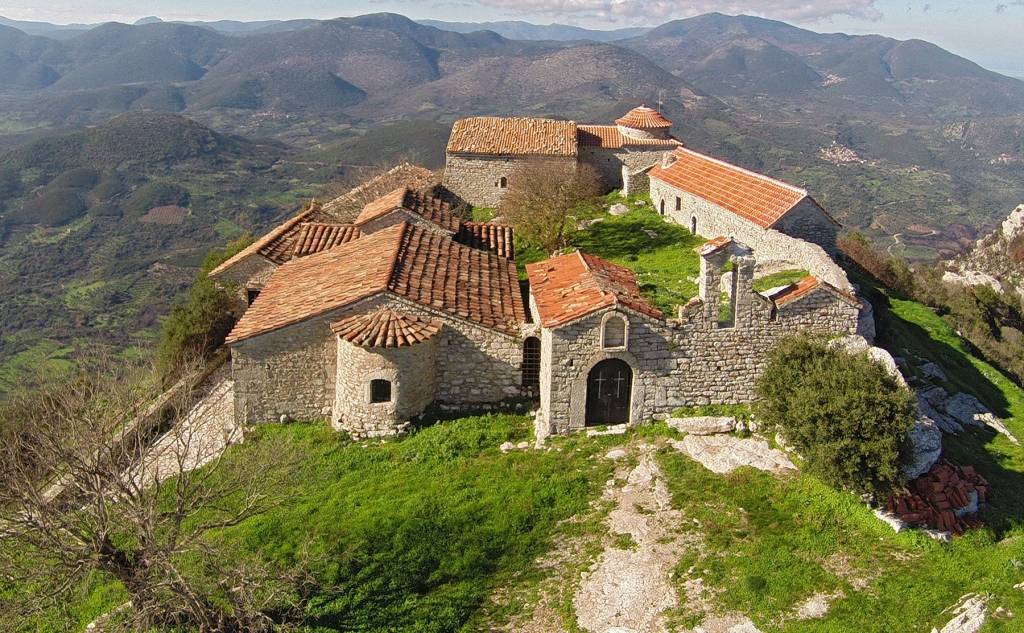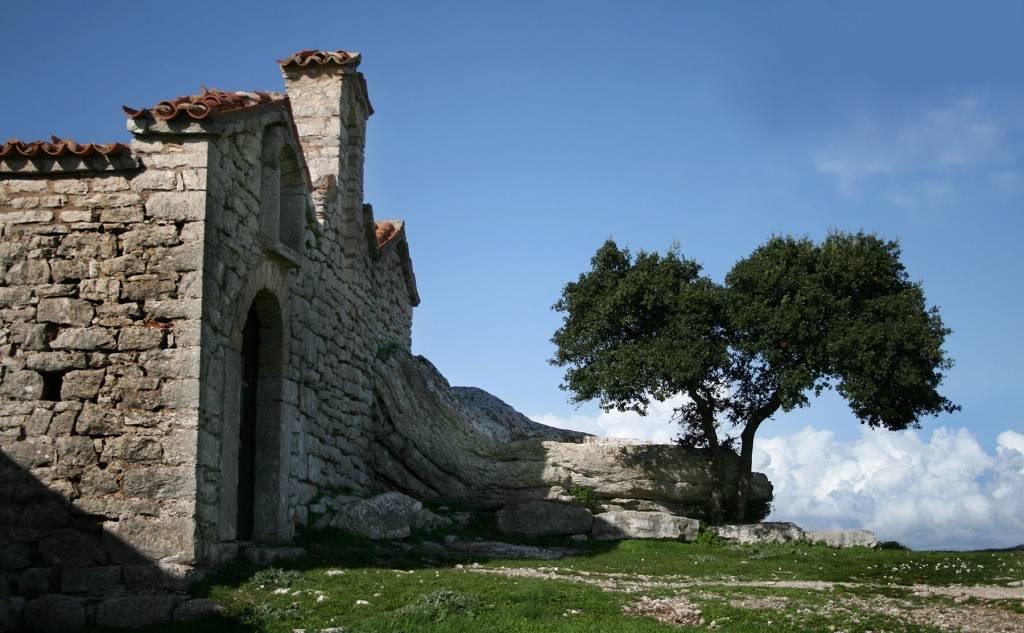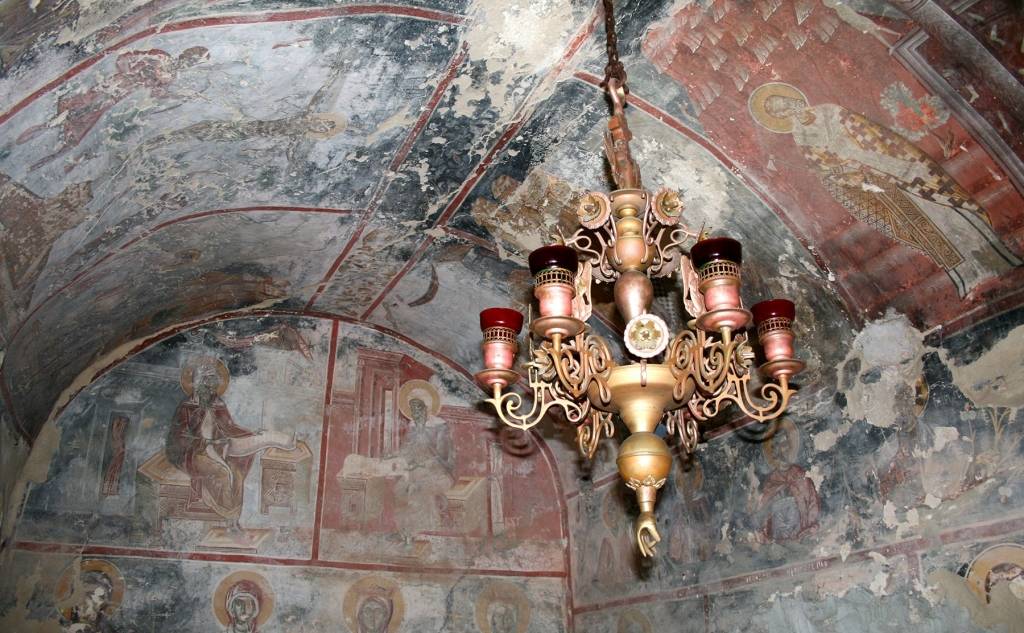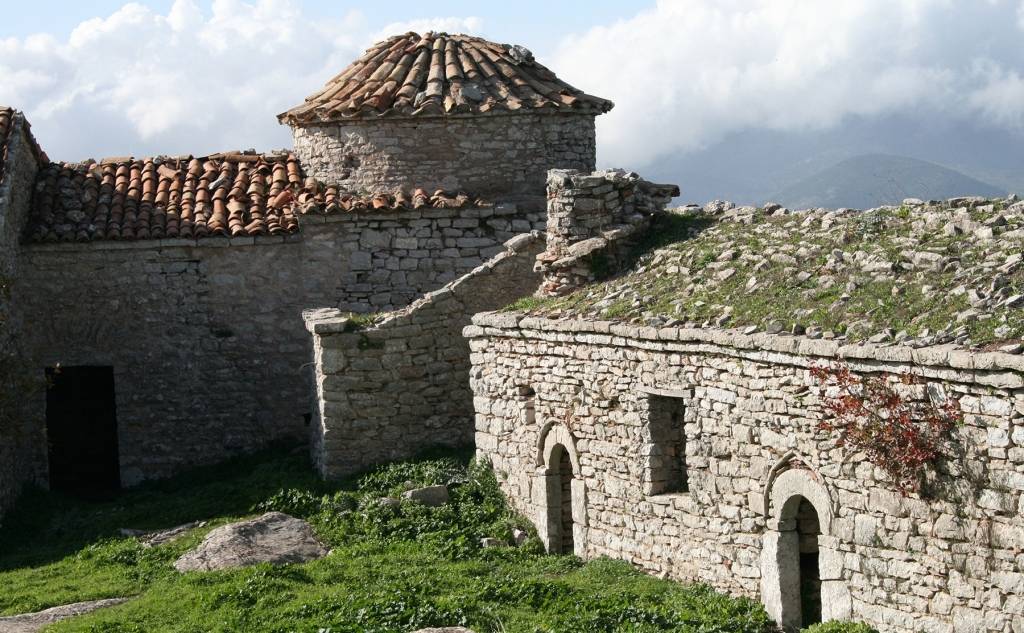Monastery of Vulcano
The Vulkano Monastery is located on Mount Ithomis (at an altitude of 359 metres), a short distance from Ancient Messina. It is the most historic and largest monastic complex in Messinia. The original location of the monastery was at the top of Mount Ithomi, where there was the ancient sanctuary of Ithomata Zeus. In fact, the bronze foot of a votive tripod found near the monastery shows that the worship of Ithomata goes back, at least to the Geometric period.
According to tradition, the monastery was founded in 725 by monks favouring the icons. Its catholicon is dedicated to the Dormition of the Virgin Mary, decorated with remarkable frescoes from 1608 (works by brothers Dimitrios and Georgios Moschos from Nafplion).
At the beginning of the 17th century, the monks abandoned it and moved lower to the current location due to the difficulties of living. The name of the Vulkano Monastery (and formerly "Vourkano" or "Dorkano") probably owes its name to a Byzantine ruler or founder to whom the area of Mount Ithomi belonged.
During the Turkish occupation, the monastery experienced great prosperity having considerable property in Messinia and Smyrna. It was a refuge for thieves and fighters, actively contributing to the Revolution of 1821 by offering money and food. In 1825, it was set on fire by Ibrahim's troops, and its monks fled to Mani and Zakynthos. They took the icon of the Virgin with them and finally returned in 1828. Since then, the monastery has been operating without interruption.
The complex is surrounded by buildings of cells and auxiliary spaces. At the junction of the meridian with the western wing of cells, there is a Byzantine “Fotanama”, a special area with a fire pit and terraces around the perimeter, where the monks sat and warmed up in the winter. The catholicon was built in 1701 and took its current form at the beginning of the 20th century. It is a cruciform church with a dome with remarkable frescoes destroyed by Ibrahim and covered with lime in 1882. The church houses the miraculous icon of Panagia Vulkaniotissa or Odigetria, which is said to be a work of art made by Evangelist Loukas. The icon bears the inscription: "Odegetria, the so-called Mount Vulcano Virgin Mary". Tradition says that the icon was miraculously found hanging from the branches of a tree while a candlestick hung right beside it.
The monastery also has all sorts of relics, as well as relics of saints, that are exhibited in a museum. Among the relics is the head of Holy Martyr Ilias of Ardounis, part of the head of Agios Dionysios the Areopagitic and part of the hand and foot of Agios Ioannis of Monemvasia. In the rich library of the monastery, there are old and new books, handwritten writings, Turkish documents, and the four Seals of the time-to-time Patriarchs of Constantinople.
Today, the old monastery is closed and only operates during the period around the fifteenth of August. The new monastery celebrates on August 15th, while on September 20th, there is a celebration and procession of the miraculous icon in Messina. During the night, thousands of people travel, accompanying the Vulkaniotissa Virgin Mary Icon, covering a distance of 20 kilometres.




